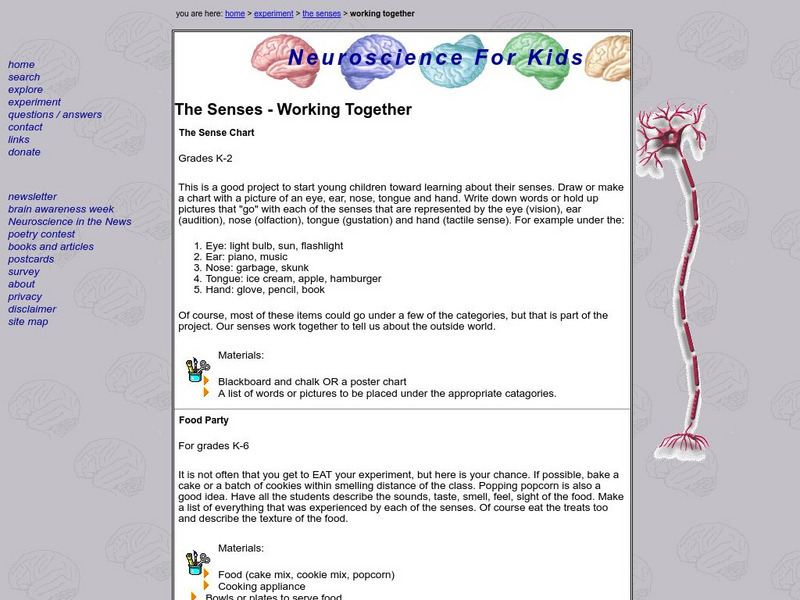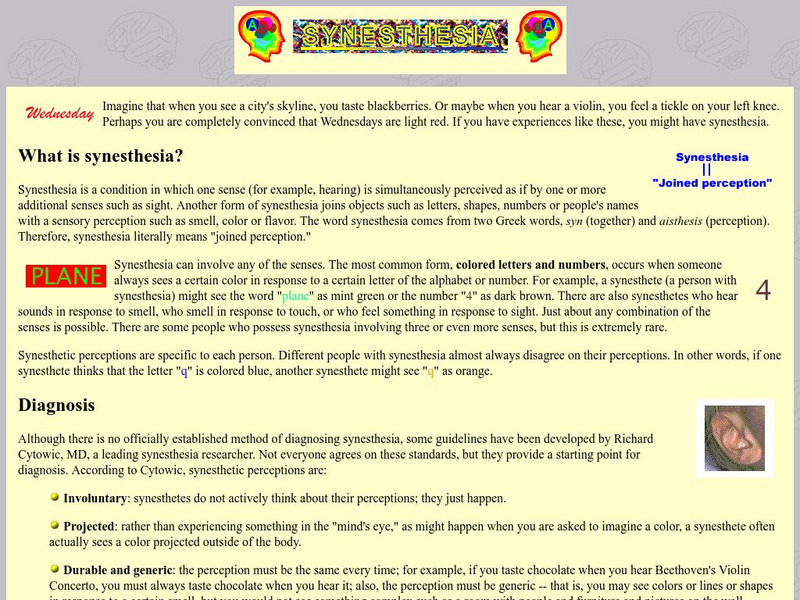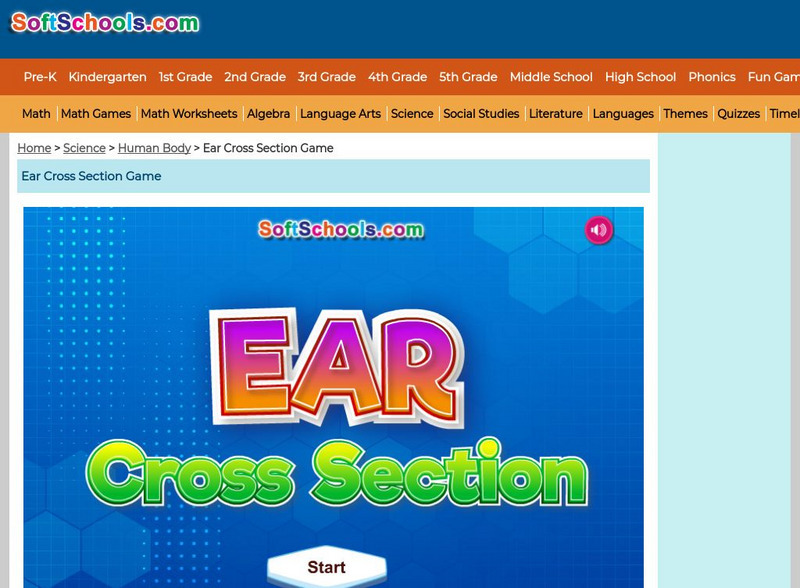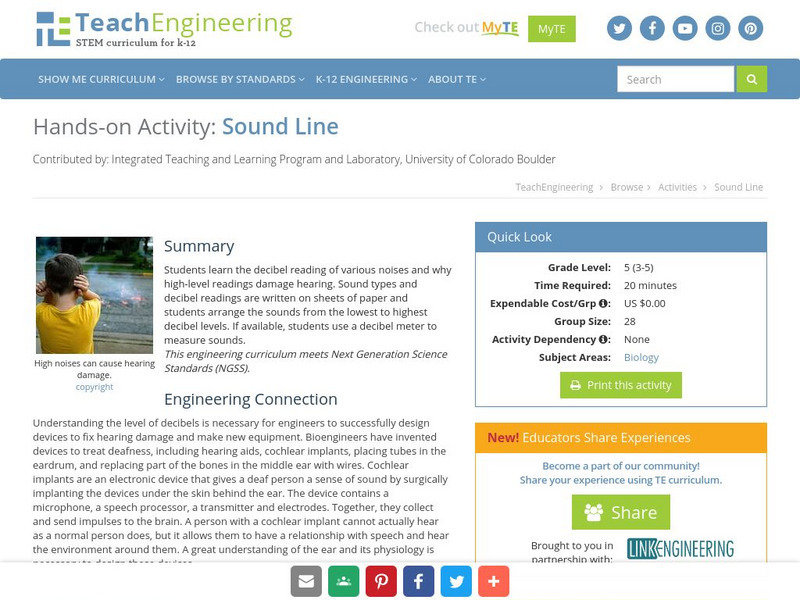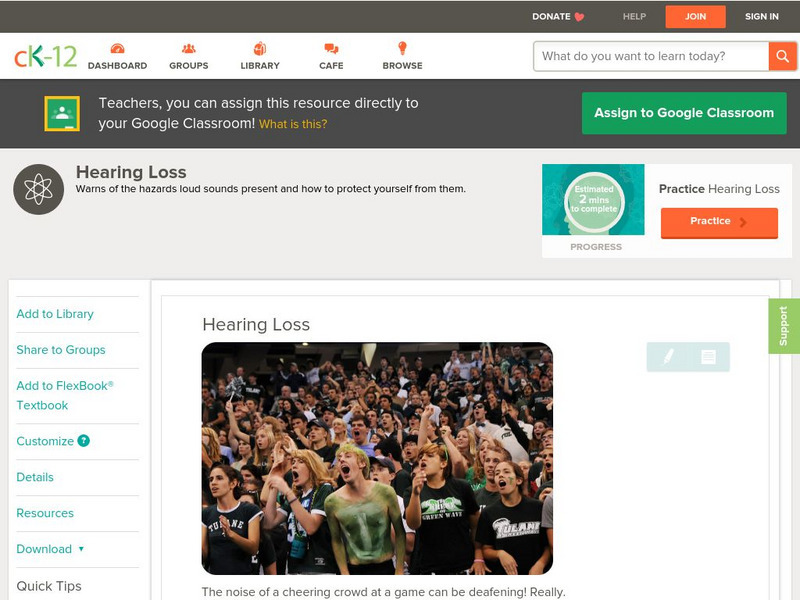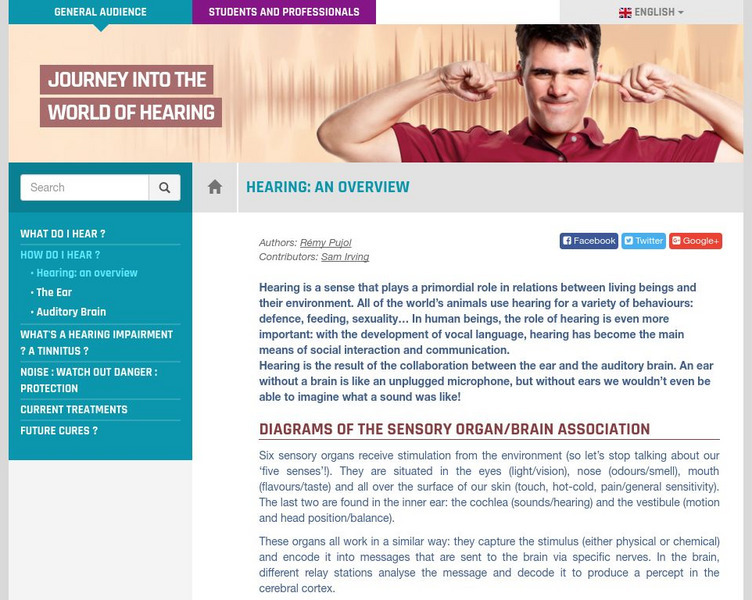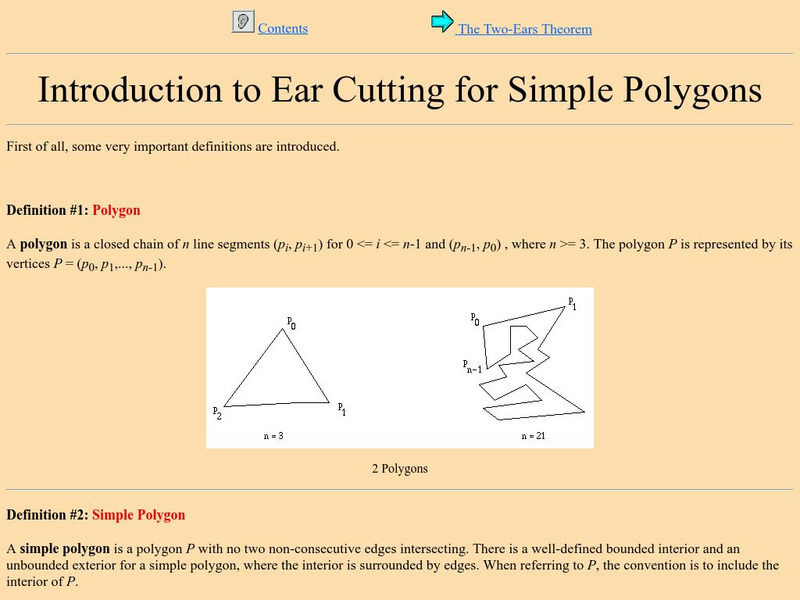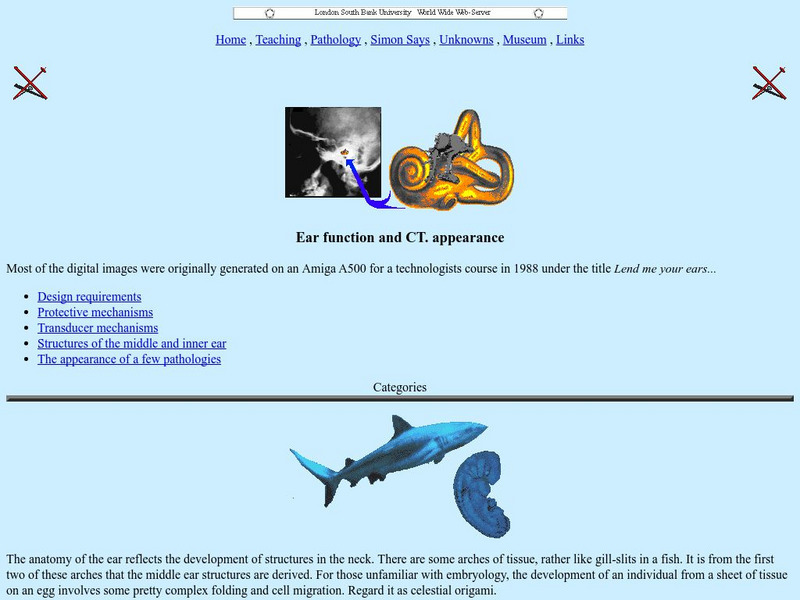University of Washington
University of Washington: The Senses Working Together
This website is dedicated to the "Senses working together." Learn how to play the sensory concentration game at this website and create a sense chart.
University of Washington
University of Washington: Synesthesia
Have you ever seen something and associated it with a taste? If so, you many have Synesthesia. This condition is not widely publicized but may be present in as many as 1 out of every 200 individuals. Learn more about "joined perception"...
Soft Schools
Soft Schools: Ear Cross Section
An interactive labeling exercise on parts of the human ear.
Lingolex
Lingolex.com: Learn Spanish: Physical Appearance
Parts of the body and other physical attributes in Spanish can be quickly learned with this fast and effective reference chart. Teacher's can make flash cards to enhance student participation.
Other
Avatar Consultants, Inc: The Physiology of Hearing
Describes the stuctures of the ear, and gives the functions of each structure. An explanation of the organ of corti. Provides a chart along with links to more pages of additional information.
The Franklin Institute
Franklin Institute: Music to Our Ears
Discover the connection between sound waves and hearing with this webpage tutorial. Be sure to click on the picture for detailed information.
Other
Siemens Science Day: Life Science: Hear Ye! Hear Ye! [Pdf]
Through this hands-on science activity, students make a model of the human ear as well as explore the parts of the ear and their roles in transferring sound.
Curated OER
Kids Health: Model Eardrum
You can make a model of the eardrum by following the simple directions on this site. Only four common items are needed to create this model.
Curated OER
Kids Health: My Body
For elementary school children, this page presents information about lungs, muscles, digestive system, teeth, skin, tongue, hair, heart, and more.
National Institutes of Health
National Institute on Deafness and Other Communication Disorders
Searchable database of the NIDCD, one of the Institutes of the National Institutes of Health (Federal Government). Covers a wide range of hearing related topics/research.
TeachEngineering
Teach Engineering: Sound Line
Students learn the decibel reading of various noises and why high-level readings damage hearing. Sound types and decibel readings are written on sheets of paper, and students arrange the sounds from the lowest to highest decibel levels....
Curated OER
Kids Health: Ears Quiz
A short quiz testing knowledge of the structure and function of human ears.
Curated OER
Kids Health: Chilling Out With Colds
Use this site to learn why colds are so "common" by what causes them and how a people catch them.
CK-12 Foundation
Ck 12: Physical Science: Hearing Loss
[Free Registration/Login may be required to access all resource tools.] Explores what deafness is, how loud sounds cause hearing loss, and how to prevent hearing loss using hearing protectors.
Other
Noise Pollution Clearinghouse
THE Noise Pollution website. Large number of links covering a vast amount of information on all aspects of noise pollution.
Inner Body
Innerbody: Animated Ear
This site will open two frames, a brief explanation of the hearing process and an animated graphic of the ear at work. Wonderful way to illustrate how the hearing mechanism works.
NeurOreille
Neur Oreille: Journey Into the World of Hearing: How Do I Hear?
See how the human ear senses a sound, and how that stimulus is transmitted to the brain for interpretation and response.
Read Works
Read Works: Music in Your Ear
[Free Registration/Login Required] An informational text about guitars. A question sheet is available to help students build skills in reading comprehension.
WebMD
Medicine Net: Hearing and Balance Anatomy
Learn all about the ear and how it works in this illustrated article on the anatomy and function of the ear.
CK-12 Foundation
Ck 12: Life Science: 11.50 Hearing and Balance
Understand the human sense of hearing and how it relates to balance.
McGill University
Ear Cutting for Simple Polygons: Introduction
This site gives the definitions for various polygon-related material.
Science and Mathematics Initiative for Learning Enhancement (SMILE)
Smile: Ears and Hearing
This lesson plan investigates sound waves and how the ear hears. Students create a model of the ear using a cardboard tube, plastic wrap, and a sheet of paper.
Other
London South Bank University: Ear Structure and Function
An informative and somewhat technical discussion on the function and structure of the inner, middle, and outer ear. Numerous diagrams accompany the text.
Treehut
Suzy's World: Ears
Find out how your ears work and try an experiment involving your hearing.


